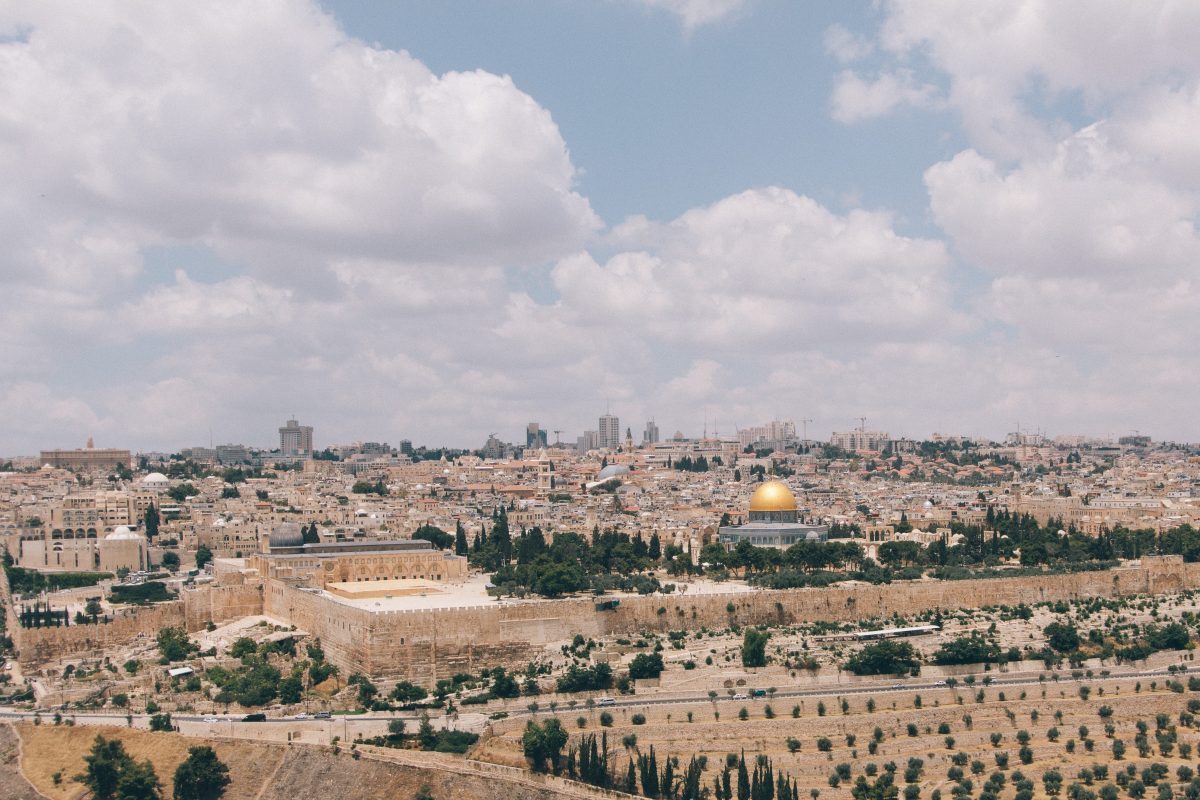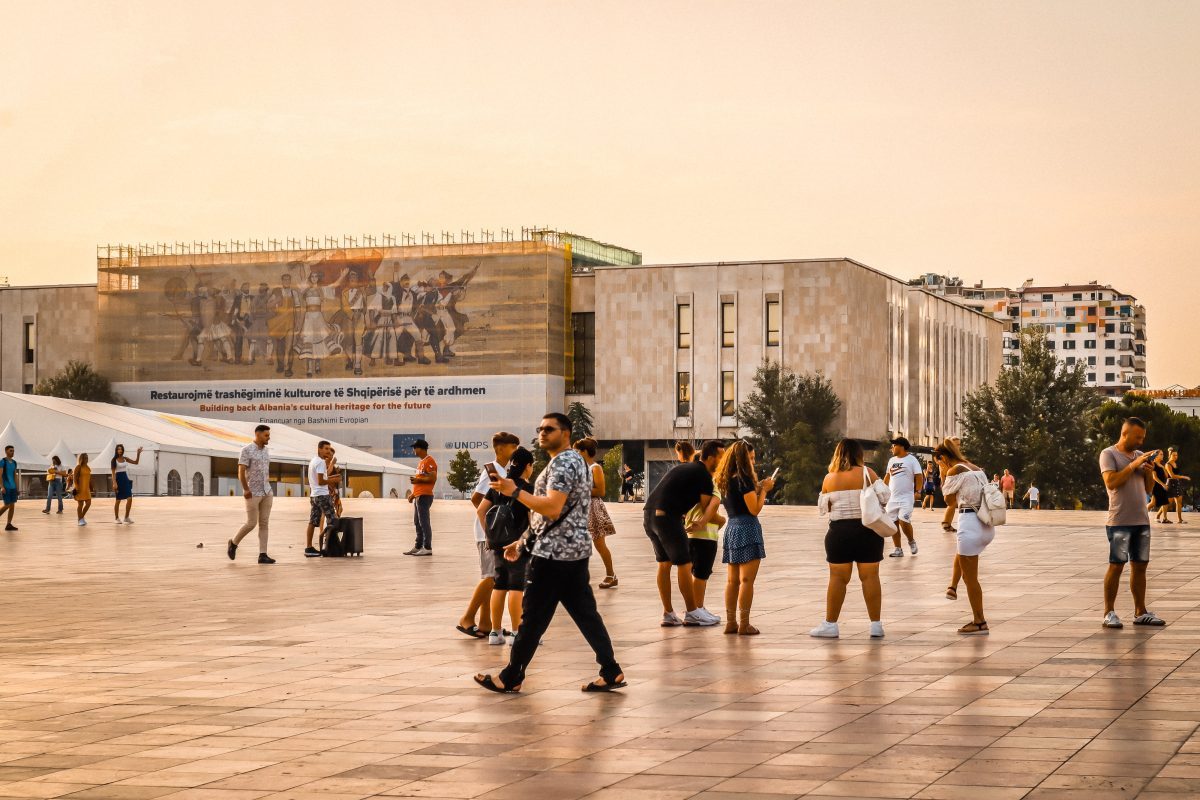How to Plan Your Petra 2-Day Tour from Jerusalem
Are you looking for an unforgettable experience during your time in Jerusalem? Take a two-day tour to Petra, one of the seven wonders of the world! This tour offers more than just admiring beautiful landscapes or historical sites. You will also experience authentic Bedouin hospitality, taste traditional local food, and have a chance to stargaze in the clear desert skies. In this guide, we will show you how to plan your Petra 2-Day Tour from Jerusalem.Experience
This tour is more than just a sightseeing journey. You will experience many different aspects of the rich culture and history of Petra through your interactions with locals and visits to historical sites.Highlights
This tour offers many highlights which make it unique and memorable. Some of these highlights are: – Visit the historical site of Mount Nebo, a unique viewpoint of the Jordan River’s west bank – Admire the ancient mosaic map of Jerusalem in the Greek Orthodox Church of St. George at Madaba – Drive through the Judean desert – Experience authentic Bedouin hospitality and an Arab-style dinner – Enjoy stargazing in the clear desert skies – Taste traditional local food – See Petra, one of the seven wonders of the worldDay 1: Jerusalem to Petra
The tour begins in Jerusalem where you will meet your guide and head towards the border. The first stop is at the Allenby Bridge/King Hussein crossing into Jordan. After completing formalities and immigration procedures, you will drive through the Judean desert. The next stop is at the historical site of Mount Nebo. This site offers a unique viewpoint of the Jordan River’s west bank. You will also see the memorial to Moses who, according to the Bible, was shown the Promised Land from this vantage point. After Mount Nebo, you will have lunch at a local restaurant before visiting the Greek Orthodox Church of St. George at Madaba. This church is home to an ancient mosaic map of Jerusalem which is over 1,000 years old. From there, you will enjoy a scenic drive south towards Petra. Eventually, you will arrive at your accommodation for the night, a Bedouin camp. The camp offers a unique experience. After checking in, you will experience authentic Bedouin hospitality. Your hosts will serve you an Arab-style dinner, which is a delicious local meal. You will also have a chance to sit beneath the clear desert skies and stargaze after dinner.Day 2: Petra to Jerusalem
Wake up early and enjoy breakfast in camp before starting your visit to Petra. Your guide will take you through the Siq, a narrow gorge which leads to Petra. It is a beautiful and unique pathway as it winds between two cliffs that rise over 80 meters tall. As you reach the end of the Siq, you will see the famous Treasury, an impressive temple carved into the rock face. From there, you will visit the other beautiful monuments such as the Monastery, the High Place of Sacrifice, and the Amphitheatre. After enjoying the beauty of Petra, it’s time to head back to Jerusalem. You will drive back via the same route, enjoying the scenery once more. Once you return to the Allenby Bridge/King Hussein crossing, you will complete the border crossing formalities before returning to Jerusalem.Book the Tour
Are you ready to embark on your Petra 2-day tour from Jerusalem? Book the tour here to experience everything this tour has to offer. Don’t forget to bring your passport and other travel documents with you for a smooth crossing at the border. This tour is perfect for travelers who want to experience authentic local culture and history in a unique way. So why wait? Book the tour today and create unforgettable memories during your time in Jerusalem!
FAQ about Jerusalem
Jerusalem is an ancient city that has a rich history and significance to several religions. It is the capital city of Israel and attracts millions of tourists every year. Here are some frequently asked questions about Jerusalem.1. What is the history of Jerusalem?
Jerusalem has a history that spans over 3,000 years. It has been conquered and ruled by various empires, including the Babylonians, the Persians, the Romans, the Byzantines, the Islamic Caliphate, the Crusaders, the Ottomans, and the British. It has also been destroyed and rebuilt several times. Jerusalem has significance to several religions, including Judaism, Christianity, and Islam. It is the site of the Jewish First Temple, the Second Temple, and the Western Wall; the Christian Church of the Holy Sepulchre; and the Islamic Dome of the Rock and Al-Aqsa Mosque.2. What are the top attractions in Jerusalem?
Visitors to Jerusalem can explore several historic and religious sites, including the Western Wall, Church of the Holy Sepulchre, Dome of the Rock, Al-Aqsa Mosque, Tower of David, Mount of Olives, and Yad Vashem Holocaust Memorial. The city is also home to several museums, such as the Israel Museum, the Yad Vashem Museum, and the Tower of David Museum. Other popular places to visit in Jerusalem include the Mahane Yehuda Market, the Ein Kerem neighborhood, and the Jerusalem Biblical Zoo.3. What is the best time to visit Jerusalem?
The best time to visit Jerusalem is during the spring (April and May) and fall (September and October) when the weather is mild and pleasant. Summers in Jerusalem can be hot and dry, and winters can be cold and rainy. However, the city is busiest during the summer months and religious holidays, so visitors may want to plan accordingly.4. What is the food like in Jerusalem?
Jerusalem offers a unique culinary scene that blends Middle Eastern, Mediterranean, and Jewish traditions. Visitors can try local specialties such as hummus, falafel, shawarma, and grilled meats. The city is also home to several international restaurants, cafes, and bakeries. Some popular food destinations in Jerusalem include Machneyuda, Abu Shukri, Jachnun Bar, and Cafe Hillel.5. What is the transportation like in Jerusalem?
Jerusalem has a reliable and efficient public transportation system that includes buses, light rail, and taxis. The light rail connects several major neighborhoods in the city, including the Central Bus Station, the Mahane Yehuda Market, and the Mount Herzl National Cemetery. Buses run throughout the city and are a convenient way to get around. Taxis are also available, and most drivers speak some English.6. What is the currency used in Jerusalem?
The currency used in Jerusalem (and Israel) is the Israeli shekel. Visitors can exchange currency at banks, exchange offices, and ATMs throughout the city. Most major credit cards are also accepted at hotels, restaurants, and shops.7. Is it safe to visit Jerusalem?
Jerusalem is generally a safe city for tourists, but visitors should exercise caution and be aware of their surroundings, especially in crowded areas and public transportation. It is important to follow security guidelines and instructions from local authorities, particularly around religious and political events.8. What is the dress code in Jerusalem?
While there is no strict dress code in Jerusalem, visitors should dress modestly when visiting religious sites. This means covering shoulders, knees, and cleavage. Visitors should also remove shoes before entering mosques and other religious sites.Book Your Tour Now
Jerusalem is a city with a rich history and significance to several religions. It offers visitors a unique mix of historic and religious sites, museums, culinary experiences, and more. Visitors should plan their trip carefully to maximize their time and ensure a safe and enjoyable journey.
How to Spend Your Time as a Tourist in Jerusalem
Jerusalem is one of the most historic and important cities in the world, with a rich culture and heritage. It’s a city that attracts millions of visitors from all over the world each year. But, with so much to see and do, it can be overwhelming to plan your itinerary. Here is a detailed guide of how to spend your time as a tourist in Jerusalem:1. Visit the Old City
The Old City of Jerusalem is a UNESCO World Heritage site and a must-see destination in Jerusalem. The walls that surround the Old City were built during the Ottoman period and date back to the 16th century. There are four quarters within the walls – the Jewish Quarter, the Arab Quarter, the Christian Quarter, and the Armenian Quarter. One of the most important sites in the Old City is the Western Wall, also known as the Wailing Wall. It’s a holy site for Jews, and people from all over the world come to pray here. Another essential spot is the Church of the Holy Sepulchre, which is believed to be the site where Jesus was crucified and buried. Plan to spend an entire day exploring the Old City, as there is plenty to see and do. Be sure to wear comfortable shoes as the streets are narrow and often uneven.2. Explore the Mount of Olives
The Mount of Olives is one of the most scenic places to visit in Jerusalem. It’s located just east of the Old City, and offers stunning views over the city. From here, you can see the Dome of the Rock, the Old City walls, and the Kidron Valley. The mount has many important sites, including the Garden of Gethsemane, where Jesus is said to have prayed before his crucifixion. The mount is also home to several historic Jewish burial sites, including the Tombs of the Prophets and the Tomb of Absalom. Plan to spend at least half a day on the Mount of Olives, taking in the views and exploring the historic landmarks.3. Visit the Israel Museum
The Israel Museum is one of the largest museums in the country and is home to an impressive collection of archaeological artifacts and art from Israel and around the world. One of the most famous exhibits is the Dead Sea Scrolls, which are the oldest surviving copies of the Hebrew Bible. The museum also has an extensive collection of Jewish art, including ceremonial objects, contemporary art, and a model of ancient Jerusalem. Plan to spend a few hours at the museum, as there is plenty to see and explore.4. Tour the Yad Vashem Holocaust Memorial
The Yad Vashem Holocaust Memorial is a solemn and moving destination. It’s a museum and memorial that commemorates the six million Jews who were killed in the Holocaust. The museum includes a vast collection of artifacts, exhibits, and personal stories from Holocaust survivors. The Hall of Names is particularly poignant, as it honors the memory of individual victims of the Holocaust. Plan to spend a few hours at Yad Vashem, as the memorial is extensive and emotionally charged.5. Wander through the Machane Yehuda Market
The Machane Yehuda Market, also known as the Shuk, is a bustling marketplace located in central Jerusalem. It’s a must-visit destination for foodies and shoppers alike. The market is famous for its fresh produce, spices, and handmade crafts. There are plenty of vendors selling local street food, such as falafel, shawarma, and hummus. Plan to spend an afternoon at the market, exploring the stalls and sampling the local cuisine.6. Take a Tour of Bethlehem
Bethlehem is just a short drive from Jerusalem and is worth a visit. It’s the birthplace of Jesus Christ and a holy city for Christians. One of the most important sites in Bethlehem is the Church of the Nativity, which is built over the spot where Jesus is said to have been born. The church dates back to the 4th century and is a UNESCO World Heritage Site. Plan to spend half a day touring Bethlehem and visiting the Church of the Nativity.Book Your Tour Now
Jerusalem is a city full of history, culture, and spirituality. It’s an essential destination for travelers who want to experience the beauty and complexity of the Middle East. Whether you’re interested in visiting religious sites, exploring local markets, or admiring world-class art, there’s something for everyone in Jerusalem. Plan your itinerary carefully, wear comfortable shoes, and prepare to be awed by the beauty and wonder of this incredible city.Table of Contents

